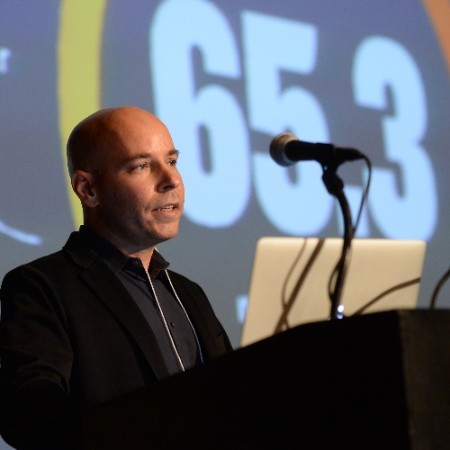On Monday Gap Inc. released its fifth social and environmental responsibility report. This report includes the company’s accomplishments in 2009-2010, goals for the near future and updates on their work with their supply chain, employees and other stakeholders. Although it is very informative, the report still has some substantial gaps in it, making it a bit difficult to fully understand and evaluate the CSR performance of Gap.
For example, one of Gap’s main pledges in the report is a 20 percent greenhouse gas emissions reduction in its U.S. operations by 2015, but the company doesn’t tell us what part the U.S. operations is from the company’s total footprint. So although we can appreciate the pledge, we can’t really tell what real impact it has on the company’s footprint.
The report is bi-annual and 160 pages long. You need to download it, although you can choose to customize it by selecting only specific chapters for download, and for every chapter you have a choice between full section and data only. As you can see the format is a bit old-fashioned, although the customization options make it easier to navigate it. Gap also included parts of the report on its impressive social responsibility website. Yet, the report reading experience is still not as convenient and user-friendly as it is with some of the new reporting formats companies use now, like Timberland’s new CSR portal for example.
Speaking of Timberland, a company that reports on its environmental and social performance on a quarterly basis since 2008, it is a bit surprising to see that Gap is still reporting on a bi-annual basis. Timberland is of course much smaller than Gap, but even bigger retailers like Walmart report now on annual basis. It is very difficult to create value from these reports for both the company and stakeholders when updates are provided only once every two years.
The report highlights the company’s progress and future goals in what Gap identifies as its four areas of focus, where its operations have the greatest potential impact: Supply chain operations, environmental programs, employees and community investment.
The Accomplishments
The supply chain is probably the most complicated focus center among the four. Gap reports on the efforts it makes to monitor its code of vendor conduct and make sure its suppliers meet Gap’s standards. The company already shows some important accomplishments, like coordinating training for 75% of key vendors on topics related to improving working conditions or ensuring that 10% of garment factories have verified human resources management systems in place.
Other goals Gap hopes to meet in 2011 include: implementing and evolving their Vendor Development Program with 20 of their key vendors globally, assessing their vendor Social Responsibility rating tool in terms of distribution, utilization and effectiveness and enhancing sustained working conditions by driving industry collaboration initiatives in their top 10 sourcing countries.
The Missing Pieces
That last point on industry collaboration is is an example of the gaps in the report I mentioned earlier. The stated goal is to implement and evolve their Vendor Development Program with 20 of their key vendors globally. We have no way of knowing if 20 is a high number or a low number. You can’t really tell without knowing the share of the 20 key vendors in Gap’s supply chain.
Another example relates to water. One of Gap’s main achievements is the implementation of their Water Quality Program. According to the report, 100 percent of Gap branded jeans are now made in compliance with the company’s wastewater quality guidelines, which ensure that wastewater from the laundries is properly treated before being discharged. It sounds great, especially given what we have learned about this issue from Greenpeace Detox campaign. But Gap doesn’t produce only jeans, so how much of Gap’s production this program actually covers? Again, we can’t know for sure as we don’t have this information available in the report.
Carbon and Water
One thing we can learn from the report is that the carbon and water footprint of Gap’s supply chain is probably the company’s biggest CSR challenge for the years to come. The company’s efforts will be shifted accordingly: “We’re beginning to shift more of our focus to the footprint of our supply chain. Though we have less direct influence over these areas – such as the production of raw materials – we believe there may be more opportunity for impact.”
Recommendations
Another issue the company might want to consider is the footprint of its global retail activity. In 2010, Gap expanded its retail operations around the world, increasing to nearly 200 franchise stores in regions from Australia to Moscow, the current carbon reduction goals relate only to U.S. operations. If the company intends to significantly increase its global presence, it should also be reflected in its environmental goals.
Final Word
Gap should be applauded for its many accomplishments and the ongoing commitment to sustainability reflected in this report. At the same time, the company might want to consider improving its reporting as one of its goals, so readers could get a better understanding of how well Gap is actually progressing.
Raz Godelnik is the co-founder of Eco-Libris, a green company working to green up the book industry in the digital age. He is also an adjunct professor in the University of Delaware’s Alfred Lerner College of Business and Economics.

Raz Godelnik is an Assistant Professor and the Co-Director of the MS in Strategic Design & Management program at Parsons School of Design in New York. Currently, his research projects focus on the impact of the sharing economy on traditional business, the sharing economy and cities’ resilience, the future of design thinking, and the integration of sustainability into Millennials’ lifestyles. Raz is the co-founder of two green startups – Hemper Jeans and Eco-Libris and holds an MBA from Tel Aviv University.














